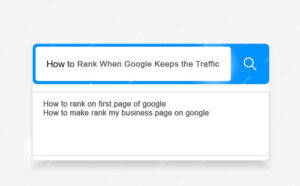In the digital age, understanding and analyzing competitors’ websites have become essential components of a robust business strategy. By dissecting the online presence of competitors, businesses gain valuable insights that can inform their own digital initiatives. This article explores ten crucial aspects to consider when conducting a comprehensive analysis of competitors’ websites.
User Experience and Design
Navigation and Site Structure: An intuitive and well-organized navigation system enhances user experience by facilitating seamless movement throughout the website. Analyzing competitors’ site structures unveils navigation patterns and aids in identifying opportunities for improvement.
Visual Appeal and Branding: The visual elements of a website play a pivotal role in shaping brand perception and user engagement. Assessing competitors’ design aesthetics provides valuable insights into prevailing trends and user preferences within the industry.
You would like to read: Elevating Your SEO Game: Effective Link Building Strategies And Pitfalls To Avoid
Content Strategy and Quality
Types of Content Offered: From blog posts and articles to videos and infographics, the diversity of content offerings influences audience engagement and retention. Analyzing competitors’ content portfolios sheds light on content formats that resonate most with the target audience.
Depth and Relevance of Content: The depth and relevance of content directly impact its ability to attract and retain visitors. Evaluating competitors’ content depth and relevance unveils opportunities to create more informative and engaging materials that address user needs effectively.
SEO and Keyword Analysis
On-Page Optimization: Effective on-page optimization enhances search engine visibility and organic traffic. Scrutinizing competitors’ on-page optimization strategies unveils tactics for optimizing meta tags, headings, and content structure to improve search rankings.
Keyword Density and Placement: Strategic keyword usage within website content influences search engine rankings and organic visibility. Analyzing competitors’ keyword density and placement provides insights into high-performing keywords and opportunities for optimization.
You would like to read: Top SEO Trends For 2024: Stay Ahead Of The Game 🚀
Backlink Profile and Authority
Quantity and Quality of Backlinks: Backlinks remain a crucial ranking factor in search engine algorithms. Examining competitors’ backlink profiles helps identify authoritative domains and potential link-building opportunities within the industry.
Domain Authority and Page Authority: Domain and page authority metrics provide indicators of a website’s credibility and influence within its niche. Comparing competitors’ domain and page authority metrics offers valuable benchmarks for assessing relative authority and competitiveness.
Social Media Integration and Engagement
Presence on Social Platforms: Social media integration extends a website’s reach and fosters community engagement. Analyzing competitors’ social media presence identifies platforms where target audiences are most active and informs social media strategy development.
Level of Engagement and Interaction: The level of audience engagement and interaction across social media platforms reflects the effectiveness of content and messaging strategies. Evaluating competitors’ social media engagement metrics unveils best practices and opportunities for increasing audience engagement.
Conversion Rate Optimization (CRO)
Call-to-Actions (CTAs): Compelling calls-to-action prompt user actions and drive conversions. Analyzing competitors’ CTAs reveals persuasive messaging techniques and optimal placement strategies for improving conversion rates.
Landing Page Effectiveness: Landing pages serve as pivotal touchpoints for guiding visitors toward conversion goals. Assessing competitors’ landing page designs and performance metrics uncovers design elements and optimization tactics that contribute to conversion success.
Mobile Responsiveness and Performance
Mobile-Friendly Design: With mobile usage surpassing desktop, mobile responsiveness is paramount for user experience and search engine rankings. Examining competitors’ mobile-friendly design practices highlights responsive design elements and ensures optimal viewing experiences across devices.
Page Loading Speed: Slow-loading pages frustrate users and hinder conversion rates. Analyzing competitors’ page loading speeds identifies performance bottlenecks and optimization opportunities for enhancing website speed and performance.
Technology Stack and Tools
CMS Platform: The choice of content management system (CMS) influences website functionality and scalability. Studying competitors’ CMS platforms provides insights into popular technologies and features that support website management and content delivery.
Third-Party Integrations: Integration of third-party tools and services augments website functionality and user experience. Assessing competitors’ third-party integrations reveals tools for enhancing e-commerce capabilities, analytics tracking, and user engagement features.
Legal and Compliance Considerations
Privacy Policy and GDPR Compliance: Compliance with privacy regulations such as GDPR is imperative for safeguarding user data and maintaining trust. Analyzing competitors’ privacy policies and GDPR compliance measures ensures alignment with legal requirements and industry standards.
Copyright and Trademark Issues: Respect for copyright and trademark laws protects intellectual property rights and prevents legal disputes. Reviewing competitors’ copyright and trademark policies helps mitigate risks associated with intellectual property infringement and establishes ethical business practices.
In conclusion, analyzing competitors’ websites provides invaluable insights that inform strategic decision-making and enhance digital competitiveness. By scrutinizing user experience, content strategy, SEO tactics, backlink profiles, social media engagement, conversion optimization efforts, technical performance, and legal compliance measures, businesses can refine their own digital strategies and position themselves for success in the competitive online landscape.










